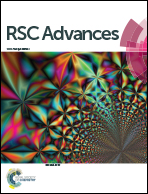Frequency response of giant electrorheological fluids in AC electric field
Abstract
It is known that in traditional dielectric electrorheological (ER) fluid the shear stress decreases or increases with the frequency of the AC electric field. However, for giant ER fluid, which is based on the principle of the polar molecule dominated electrorheological (PM-ER) effect, how shear stress varies with the frequency of the AC electric field is still not clear. In the present paper, we systematically studied the frequency dependence of PM-ER fluid by measuring the shear stresses of PM-ER fluids consisting of CTO nanoparticles under a sinusoidal electric field in a wide frequency range. It is found that the shear stress decreases with the increase of frequency when an AC electric field is applied. In PM-ER fluids there are nonuniform phase shifts appearing in shear stresses with respect to the sinusoidal electric field. These phase shifts become more pronounced as the frequency increases, which leads to the decrease of the amplitudes of the shear stresses. When the frequency is high enough, the oscillations of shear stresses smear out and the amplitudes of shear stresses reduce to a single low value. This behavior in PM-ER fluids is different from that in conventional ER fluids. For a comparison with PM-ER fluid, the response of a traditional ER fluid to frequency in an AC field is also studied, in which the particles possess high dielectric constant. The origin of different frequency responses in two types of ER fluids has been discussed and explained.


 Please wait while we load your content...
Please wait while we load your content...